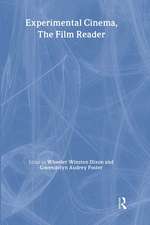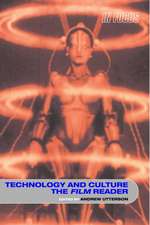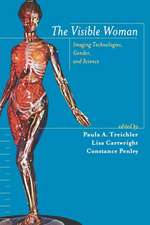Feminism and Film Theory
Editat de Constance Penleyen Limba Engleză Hardback – sep 2016
| Toate formatele și edițiile | Preț | Express |
|---|---|---|
| Paperback (1) | 325.43 lei 6-8 săpt. | |
| Taylor & Francis – 23 sep 1988 | 325.43 lei 6-8 săpt. | |
| Hardback (1) | 1218.08 lei 6-8 săpt. | |
| Taylor & Francis – sep 2016 | 1218.08 lei 6-8 săpt. |
Preț: 1218.08 lei
Preț vechi: 1485.47 lei
-18% Nou
Puncte Express: 1827
Preț estimativ în valută:
233.11€ • 242.47$ • 192.44£
233.11€ • 242.47$ • 192.44£
Carte tipărită la comandă
Livrare economică 14-28 aprilie
Preluare comenzi: 021 569.72.76
Specificații
ISBN-13: 9781138151291
ISBN-10: 1138151297
Pagini: 280
Dimensiuni: 152 x 229 mm
Greutate: 0.45 kg
Ediția:1
Editura: Taylor & Francis
Colecția Routledge
Locul publicării:Oxford, United Kingdom
ISBN-10: 1138151297
Pagini: 280
Dimensiuni: 152 x 229 mm
Greutate: 0.45 kg
Ediția:1
Editura: Taylor & Francis
Colecția Routledge
Locul publicării:Oxford, United Kingdom
Notă biografică
Constance Penley teaches film history and theory at the University of Rochester and is co-editor of Camera Obscura: A journal of Feminism and Film Theory. She 1s the author of The Future of an Illusion: Film, Feminism, and Psychoanalysis.
Cuprins
Chapter 1 Introduction The Lady Doesn’t Vanish: Feminism and Film Theory, Constance Penley; Chapter 2 The Place of Woman in the Cinema of Raoul Walsh, Pam Cook, Claire Johnston; Chapter 3 Dorothy Arzner: Critical Strategies, Claire Johnston; Chapter 4 Approaching the Work of Dorothy Arzner, Pam Cook; Chapter 5 Visual Pleasure and Narrative Cinema, Laura Mulvey; Chapter 6 Afterthoughts on “;Visual Pleasure and Narrative Cinema” inspired by Duel in the Sun[Laura Mulvey; Chapter 7 Rereading the Work of Claire Johnston, Janet Bergstrom; Chapter 8 Feminine Discourse in Christopher Strong[Jacquelyn Suter; Chapter 9 The Popular Film as a Progressive Text—a Discussion of Coma[Elizabeth Cowie; Chapter 10 Paranoia and the Film System, Jacqueline Rose; Chapter 11 Enunciation and Sexual Difference, Janet Bergstrom; Chapter 12 Alternation, Segmentation, Hypnosis: Interview with Raymond Bellour—An Excerpt, Janet Bergstrom; Chapter 13 Caughtand Rebecca:The Inscription of Femininity as Absence, Mary Ann Doane; Chapter 14 Woman’s Stake: Filming the Female Body, Mary Ann Doane; Chapter 15 India Song/Son nom de Venise dans Calcutta désert:The Compulsion to Repeat, Joan Copjec; Chapter 16 The Cinema of Lol V. Stein, Elisabeth Lyon;
















